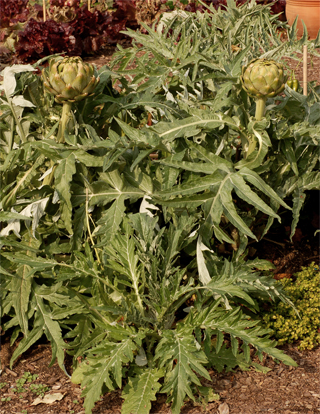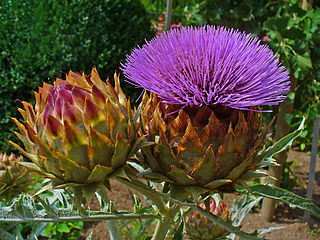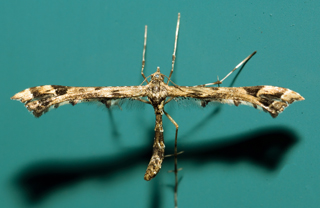
Growing the Best Artichokes in Oregon, Washington and British Columbia.
Artichokes grown at home are tastier with much more tender flesh that no store-bought produce can match. In the Mediterranean, artichokes were valued by the ancient Greeks and Romans for both food and medicinal uses. A member of the thistle family, the artichoke (Cynara scolymus) can grow to four feet tall. With their 2-3 foot long arched silvery leaves, they are a beautiful and unusual-looking addition to the garden.
They are perennials in the northwest, if carefully mulched or otherwise protected over the winter. The plants are grown for their unopened flower buds, which are boiled in salt water and eaten hot or cold, or pickled. Figure on 4-6 plants for a family.
Artichokes and Your Health
Low in calories and fat and high in fiber and many nutrients, artichokes are a nutritional gold-mine. The fiber helps lower bad cholesterol; folic acid, vitamin C and other antioxidants fight free radicals (agents of aging!) and boost immunity; B-complex vitamins enhance metabolic function. Artichokes and nutrition.
Seasonal To-do List
Spring
- Start seeds indoors (late January/ early February)
- We recommend Green Globe, Imperial Star and Emerald
- Uncover overwintered plants in April if you cut them back
Late Spring
- In May or June purchase plants from a nursery
- Fertilize transplants with organic 5-1-1 mix
- Prepare bed with compost or aged manure
- Plant out transplants or purchased crowns after danger of frost, but with cool days left
Summer
- Harvest flower buds
- Treat for aphids and earwigs if in evidence
- Keep well watered
- Remove spent stems to allow replacement growth
Fall
- Cut back dead fronds
- Add compost
Winter
- Mulch beds or cover plants. In a mild winter a large bucket will protect plants during a short cold snap
- Covering with a small cloche will also keep plants happy but insulate with an old blanket or tarp during cold periods
Location
Artichokes are sun-loving big plants, so plant in full sun in rich, sandy soil with plenty of room between plants. Good drainage is essential to prevent crown-rot. Also, assure that the tall, leafy plants will not shade other beds.
Planting
6-8 weeks before putting out crowns or transplants, dig your bed to about 2 feet, mixing in compost, lime and phosphate. Artichoke plants need renewing every 4-5 years – either divide from an existing plant or start fresh.
After danger of frost, choose the healthiest, most robust transplants or crowns (store-bought or divisions from previous year’s plants) and plant 3 feet apart in all directions. Plants need 10-12 days of temperatures below 50 degrees to stimulate budding. Add composted chicken manure or fish fertilizer to get transplants off to a good start. Water in well.
Mulching
Conserve moisture and keep weeds down with composted straw or leaf mulch during the growing season. Apply additional mulch in the fall to protect from cold over the winter.
Water
Water deeply 1-3 times a week to promote large fleshy buds and deep roots. A soaker hose circling the plant and covered with mulch works well, but keep it clear of the plant crown to avoid rot.
Harvest
Some plants won’t bud until their second year, but others will provide a light crop the first year. The biggest buds are at the terminus of branches. Cut with a sharp knife, leaving an inch or so of stem attached. Search out smaller buds among the foliage. The buds will taste best if still tightly closed; they become tough and dry as they age. If left to bloom the head will flower like a giant thistle but this will reduce future crops.
Pests and diseases
Bacterial crown-rot
In the wet northwest climate, bacterial crown-rot may be a bigger problem than insects. Keep mulch and dead foliage away from main stem to prevent this disease. Signs of crown-rot: stunted growth, wilted leaves, rotten crown tissue, new leaves turning brown and dropping off. Crown-rot can be spread by contaminated tools, so clean all clippers, knives and shovels to prevent spreading of the disease. Infected plants should be destroyed.
Aphids
Small bugs may be visible on underside of leaves, but are also evidenced by honeydew deposits on leaves and by curling leaves and stunted plant growth. Treat with Neem oil or insecticidal soap spray. Flush out aphids by submerging cut buds in warm salt water.
Artichoke plume moth
Recognize this insect by its gray-brown, feather-like wings. It chews holes in young leaves, stems and buds in the spring. Cut and destroy infected plant parts.
Cabbage loopers
These caterpillars affect many garden plants, particularly brassicas, so stay on top of them to prevent spreading. Look for the long, thin green caterpillars themselves and for the small holes they eat in leaves and white or pale green eggs laid on underside of leaves. Treat by hand-picking or with Bacillus thuringiensis (BT).
Earwigs
Earwig damage appears as holes bored through the base of flower buds. Inexpensive traps can be made from rolled cardboard where earwigs will hide during the day. Shake into soapy water or just somewhere away from the garden.
Slugs & Snails
These pests leave large holes in leaves and usually come out at night. Best controlled with traps or pet-and-wildlife-safe baits.
Gray mold
In very wet climates, gray mold may affect leaves and buds. Prevent by avoiding over-crowding and by assuring that bed is well-drained. Water at base only and avoid wetting leaves.




